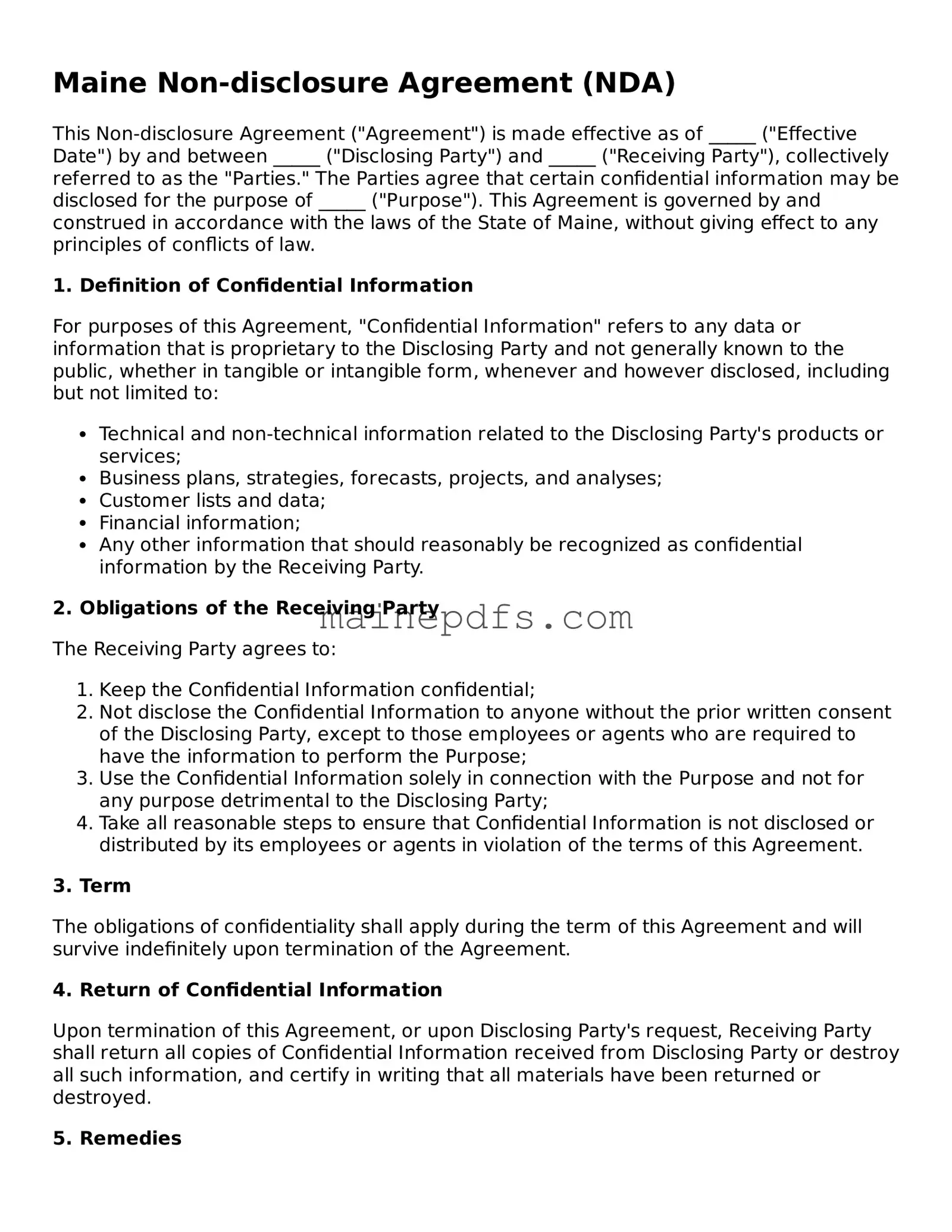Maine Non-disclosure Agreement (NDA)
This Non-disclosure Agreement ("Agreement") is made effective as of _____ ("Effective Date") by and between _____ ("Disclosing Party") and _____ ("Receiving Party"), collectively referred to as the "Parties." The Parties agree that certain confidential information may be disclosed for the purpose of _____ ("Purpose"). This Agreement is governed by and construed in accordance with the laws of the State of Maine, without giving effect to any principles of conflicts of law.
1. Definition of Confidential Information
For purposes of this Agreement, "Confidential Information" refers to any data or information that is proprietary to the Disclosing Party and not generally known to the public, whether in tangible or intangible form, whenever and however disclosed, including but not limited to:
- Technical and non-technical information related to the Disclosing Party's products or services;
- Business plans, strategies, forecasts, projects, and analyses;
- Customer lists and data;
- Financial information;
- Any other information that should reasonably be recognized as confidential information by the Receiving Party.
2. Obligations of the Receiving Party
The Receiving Party agrees to:
- Keep the Confidential Information confidential;
- Not disclose the Confidential Information to anyone without the prior written consent of the Disclosing Party, except to those employees or agents who are required to have the information to perform the Purpose;
- Use the Confidential Information solely in connection with the Purpose and not for any purpose detrimental to the Disclosing Party;
- Take all reasonable steps to ensure that Confidential Information is not disclosed or distributed by its employees or agents in violation of the terms of this Agreement.
3. Term
The obligations of confidentiality shall apply during the term of this Agreement and will survive indefinitely upon termination of the Agreement.
4. Return of Confidential Information
Upon termination of this Agreement, or upon Disclosing Party's request, Receiving Party shall return all copies of Confidential Information received from Disclosing Party or destroy all such information, and certify in writing that all materials have been returned or destroyed.
5. Remedies
In the event of a breach or threatened breach by the Receiving Party, the Disclosing Party shall be entitled to equitable relief, including injunction and specific performance, in addition to all other remedies available at law or in equity.
6. Jurisdiction
This Agreement shall be governed by and construed in accordance with the laws of the State of Maine, and any legal action or proceeding relating to this Agreement shall be brought in the federal or state courts located in Maine.
Signature:
Disclosing Party: _____________________
Receiving Party: _____________________
Date: _____________________
